Grace Woodcock
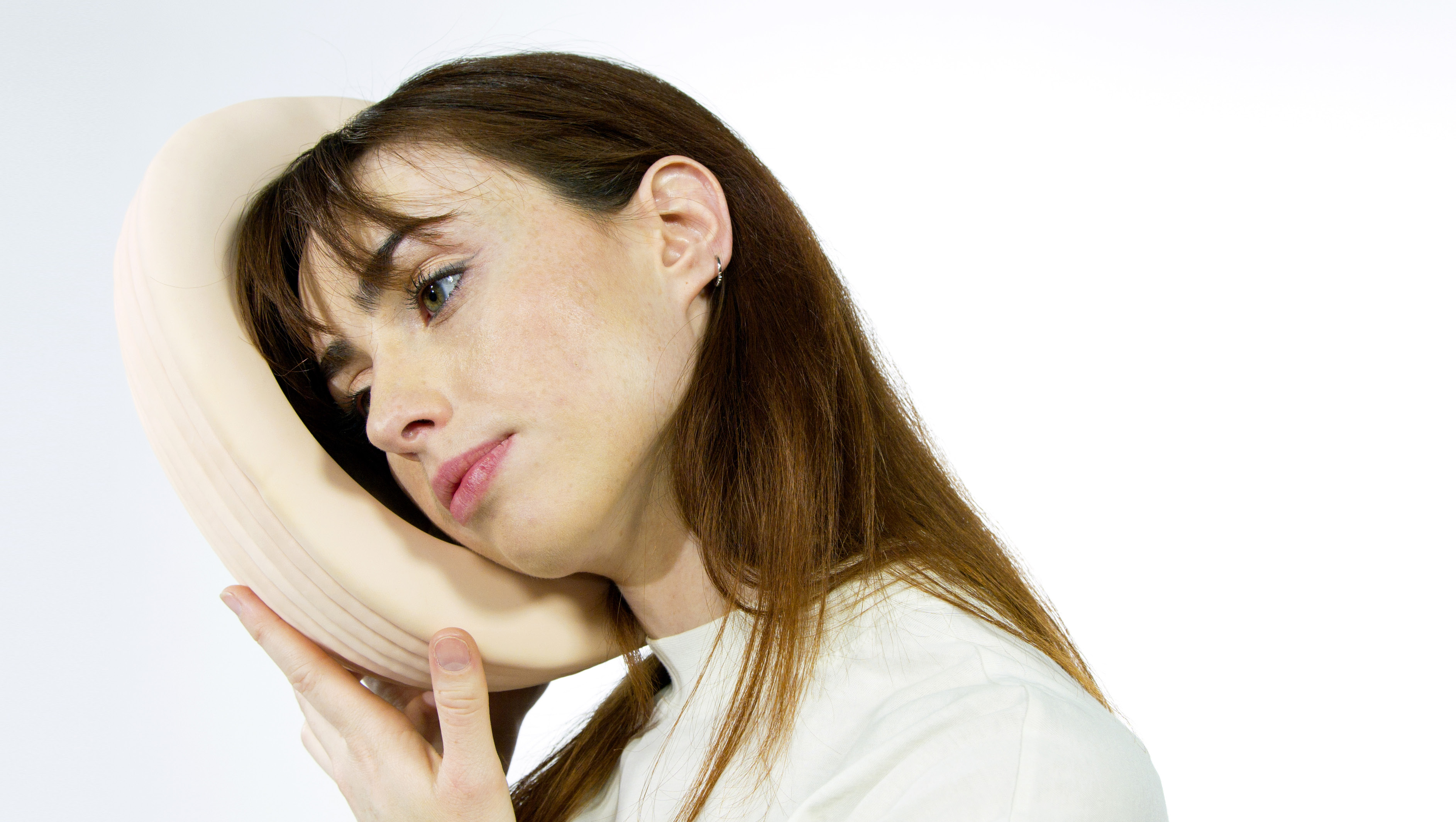
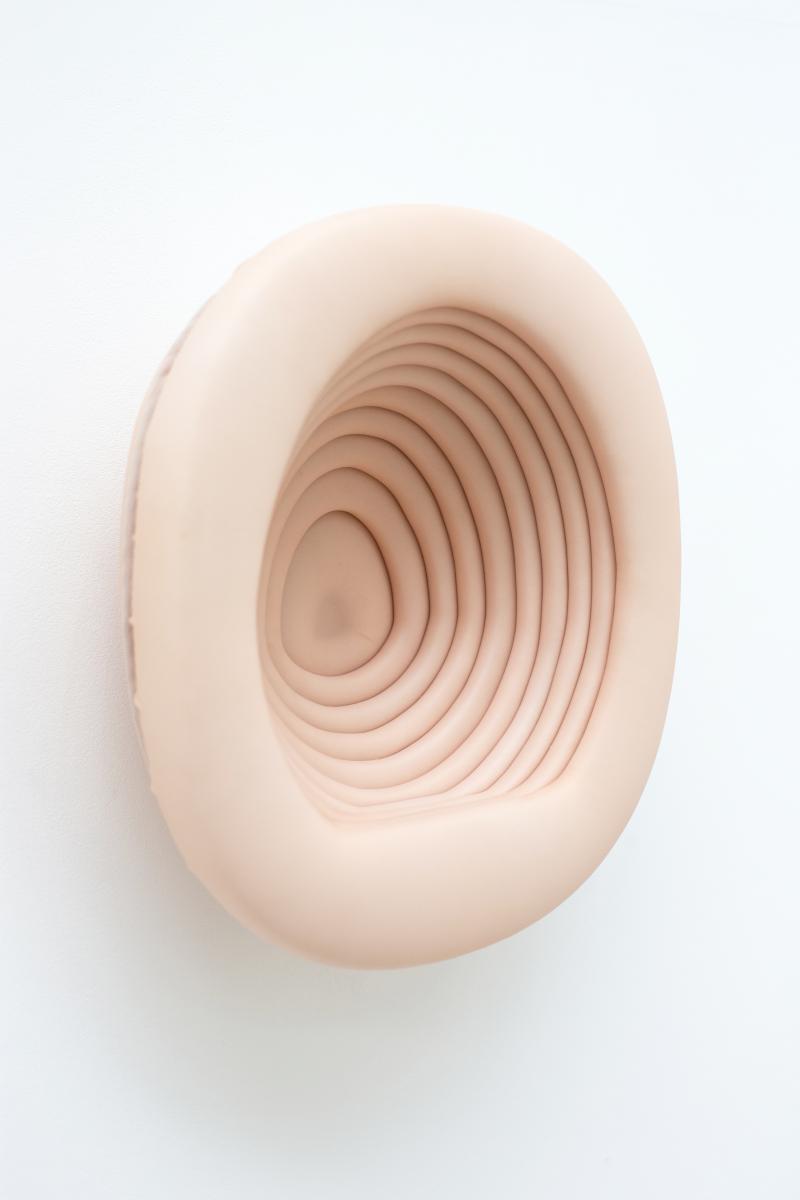
When viewing your works it feels like there is an ongoing tactile quality to them. Is physical touch something you encourage with your viewers, or is this a deliberate tension that you create not to be broken?
Really a bit of both. I’d love to make a series of tactile aids, work that is meant to be sat in, leant against, stroked or just held. But in general, I just want you to want to touch them. The element of desire is important, that kind of ‘tactilation’ is what drives my practice. When it comes to encountering my work I’m less interested in what happens when things are physically touched. That urge to reach out to stroke or squeeze, to press something against your face or even to lick is more exciting than the tension of not fulfilling it.
With the lack of touch in our society more perceptible than ever, now is a strange time to think about the corporeal experiences we crave. But since galleries and museums are known to be spaces where physical touch is against the rules I’m interested in eliciting tactility through a visual medium - to feel touch at a distance.
I’ve been researching mirror-touch synaesthesia as a kind of model for a more embodied way of seeing. People with mirror-touch feel a physical sensation of touch through observation of touch to others. It’s triggered by an over activation of the mirror-neuron system which we all have. It’s the reason we catch a yawn or flinch if we see someone get punched. But for these synaesthetes the experience of touch isn’t vague, it’s real. So the boundary between what is externally encountered and internally felt is blurred.
This extreme empathy manifests at different degrees and a tiny portion of these synaesthetes experience embedded empathy with inanimate objects too and this is what’s most stimulating in relation to making sculptures. Joel Salinas, a hypersensitive mirror-touch synaesthete has described how looking at a lamppost will make him feel elongated with his head really high up or how a glass of water makes him feel partially submerged, the edge of the water tickling the sides of his mouth. I try to generate those forms and textures which make space for that kind of experience, to give you something to map your body onto - a kind of sensory surrogate for touch.
I’d like to encourage an eye massage - roll around the surfaces. Feel the tightness at the tips, sink into their cushioning. Slip along the baby oil softness of their skin. Feel the piercing of the acupuncture needle.
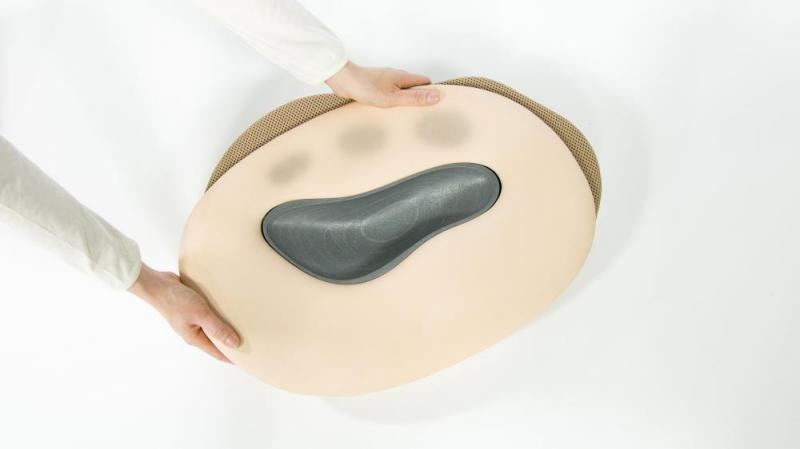
The pieces you make bring out this sensation you describe so acutely. I am left wondering what's your approach to invoking that mirror-touch bodily experience when you are creating your works?
A combination of intuition and trial and error! Sometimes I’ll build up a piece to be ‘for’ the body. I often work off a specific measurement from my body. Like the space in the middle of ‘The Intimacy Package’ is modelled from my hands cupped together. It was designed to be a stand-up leaning support for your cheek to rest in.
Without using it or knowing exactly what that form is for I feel like the body kind of knows or can relate to that negative space. When the scale is right then it’s more likely you’ll map yourself into or onto the form when you experience the work.
With other works, I’ll treat the sculpture as the body. I pad out my forms with upholstery foam so that the give in the surface is tangible. Like the fleshy part at the base of your thumb. I might pierce the surface with magnets or acupuncture needles. Both approaches can give the right feeling but it’s totally subjective.

One element of your work that is striking is the dichotomy between the bodily elements and the industrial qualities of the materials you use. What are the origins of the material choices you make with your work?
I try to think about the ontological triggers of different fabrics and colours when I’m making work. Like when you look at pleather there are implications of fakery, you’re aware that it is a synthetic replica for the organic. It brings the work into the sphere of the salon or a faux luxe or clinical interior. Latex gives an easy uncanny likeness to skin. With the works, I want to have more evident agency, utility or prosthetic purpose I go for more mechanic or industrial materials and bring in metal armatures or whatever feels appropriate.
In terms of that dichotomy between the organic and industrial, I’m weirdly fascinated by Wilhelm Reich’s Orgone theory. Between being arrested by the FBI and the FDA he was practising various types of alternative body psychotherapy and Orgonomy. His theories were based around the libidinal life force, the ‘orgone’, or a lack of libido causing illness or imbalance.
He believed that interactions between mechanical and natural materials, like layering iron and wool, would draw out the negative energy in an environment. Reich would put his patients in The Orgone Box, a chamber where the walls were made of layered inorganic and organic material, or give them orgonite pyramids constructed of layers with the same material power. I’m not defending his methods but the cult following is kind of magic in itself. You can easily find Orgone pyramid kits which are readily interchangeable with chakra crystals said to treat EMF (electromagnetic field) and ‘neutralise electronic smog’ - Amazon.
Since I first came across Reich I’ve been carefully layering materials and playing with the potential for power in the unseen. I think there is a kind of preciousness evident in carefully constructed work. Underneath the surface levels of pleather, thermoplastic, latex, sports mesh or whatever are layers of upholstery foam, sometimes lavender, restorative teas, causticum or Epsom salts in a bid to replicate some of this pseudo power.
I use a lot of magnets in my work for the same reason. Alternative therapy of Magnotherapy is found in various forms from using magnets to draw the iron in the blood to the part of the body which needs healing, or targeted electromagnetic radiation in EMT. While most Magnotherapy is understood to be pseudoscientific, when you hold even slightly powerful magnets either side of the palm of your hand, you can really feel a change in pressure or an internal pull.
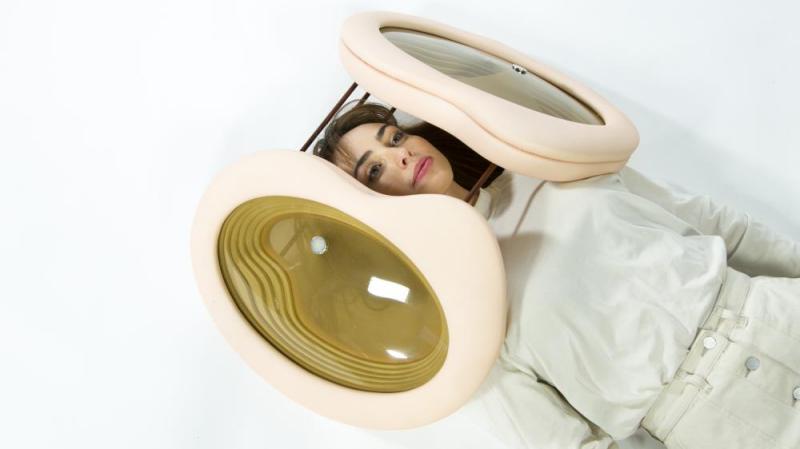
I'm captivated by the way you describe the power of the unseen, specifically what you describe as a pseudo power, for example in the form of alternative medicine elements. Could you talk more about what draws you to these materials sometimes ambiguous ability to cause an effect?
It’s the ambiguity or the potential of the material which is alluring. I find something palpable in all the magnets, teas and scents that I pull into my work. Sometimes it’s the medicinal value or even the unquantifiable power in the placebo effect. With magnets or acupuncture needles, it’s the way the thing physically affects what it touches. Other times it could be a smell or just the innate way that I respond to a material’s basic qualities. Whatever the originally intended value or function is it gets suspended once it’s in the sculpture. The potential is trapped in there even when it’s not visible.
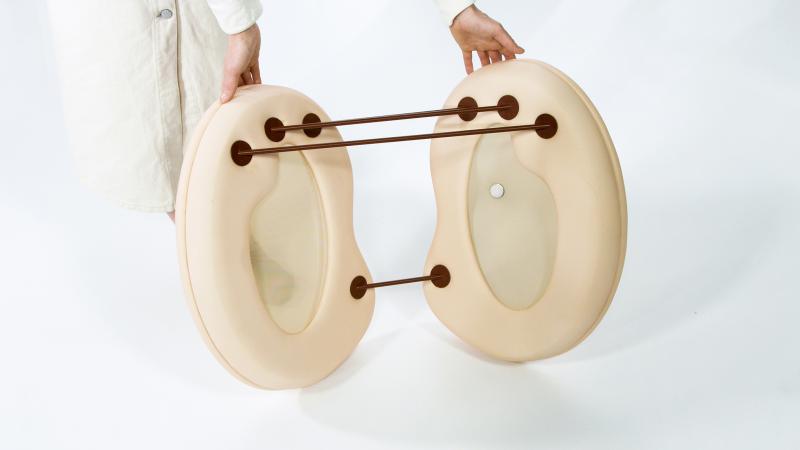
You graduated from the RCA with an MA in Painting; there are elements of your work that can feel somewhat sculptural, in addition to noticeable homage to fields like ergonomic furniture design. How do you feel about categorisation in relation to your practice?
I feel like categorisation is tricky. The idea of separate disciplines of art-making is something that had an overbearing influence on me through my BA and took a weirdly long time to get free from. I did my BA at Edinburgh College of Art which used to be split into different pathways and I chose painting. There were sculptural elements to my paintings - I made some tables, a few soft sculptures and played around with wax and silicone casting - but all discussion around what was made always came back to the history of painting or ‘expanded painting’, which encouraged quite a dry, academic approach and making art about art.
I knew I hadn’t found my feet with what I was making but after taking some time out before RCA it still felt right to choose Painting. Very early into the MA, it became obvious that I was struggling unnecessarily to pursue the ideas I was working with, mainly the drive for a specific type of tactile experience, through image-making and I started to just make the work that felt right. No one cared what I made there. There were no restrictions to the workshops and the tutors actively encouraged me to be more sculptural. It took an annoyingly long time for me to shake flat, wall-based confines and stop calling everything a painting. Now I like the awkward hang-ups from the influence of ‘Painting’ that still show through.
I do think of what I make as sculpture now, but some are wearables, some are still flat, and I’m working on some seating at the moment too. On the one hand, I work in textiles, incorporating the crafts of sewing and upholstery; on the other, I use 3D CAD software to build structures. I don’t worry about the categorising when I am making anymore. Sometimes I’ll actively simulate the language of biomorphic, ergonomic furniture because of the anxiety induced by observing an object which recalls the culture of wellness - a response which I think is sparked by the depressing reality of a society which has made us need this self-care. Other pieces look to furniture (particularly Space Age furniture) in homage to the optimism in those forms built so perfectly for the human feeling body in a time when the future was so exciting.
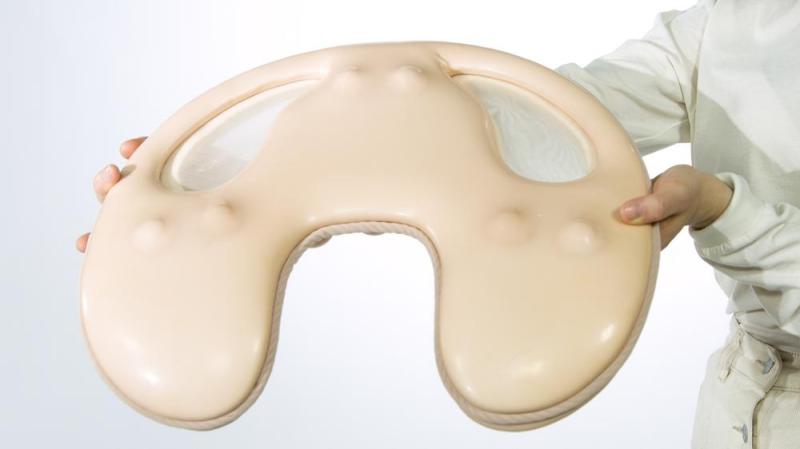
It's interesting the final point you make there with the reference to the optimism of the Space Age, and the depression caused by the necessity for self-care. Would you say your work also explores these more emotional aspects of the human condition?
Yeah totally, I’d say it’s all wrapped up in the same thing. Touch has a double meaning - it covers affective encounters as well as physical interactions. So much of the way we use language shows how interlinked emotions and tactility are. Things ‘touch us’ and ‘move us’ all the time. And then even really young children implicitly understand what is meant when people are described as ‘slimy’ or ’soft’. I’m more interested in immediate gut feelings that come about below the level of consciousness. The belly feelings like butterflies or dread. Those feelings that our bodies just know.
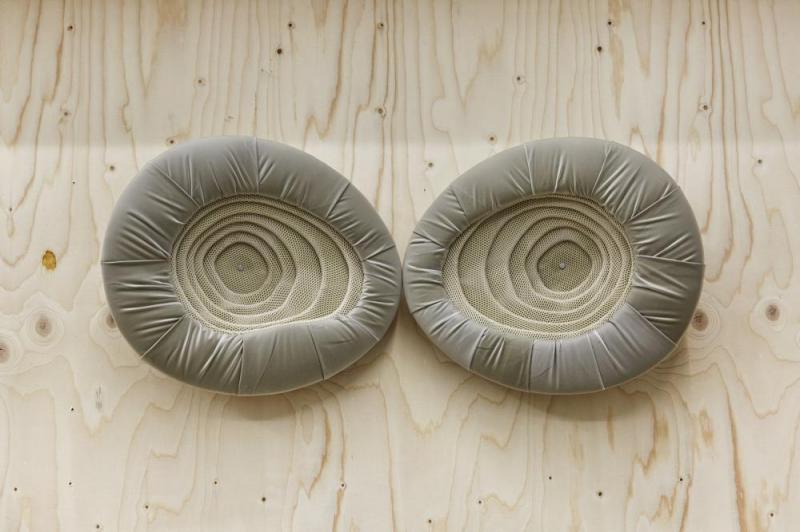
You recently had a group show, Habitual, at Castor Projects. Can you talk a bit about your experience with the show and working with the gallery?
I first met with Andy, the director of Castor, last summer after the RCA degree show. We had a great studio visit discussing 60s sci-fi influences, material power, placebos and alternative medicines I’d been thinking through in my work and we really got on. A little while after the visit he suggested we work on a solo show at the gallery and I’ve been working towards that for most of the year. The show was due in June but has been postponed due to COVID-19. I’ve been going to see shows at Castor for a couple of years and It’s been really exciting to be involved in a program full of so many artists I respect.
Andy first reached out about the idea for the group show in October with a drawing of a storage unit. His plan for a huge wooden structure with 5 vertical drawers for artwork to hang in was almost exactly the same in the sketch as it was when built for Habitual. I didn’t know who else would be showing until after I had made pore-tal but I loved the idea.
So often with group shows, there is little to nothing holding the artists together but the weird fiction of this compulsive collector David Northedge wrote for Habitual gave a purpose to an unconnected group showing in an unconventional way. It was a really fun introduction to showing in the space and the interruption in viewing the show did something really interesting. As a performer opened and closed each rack the way the work was seen became very theatrical and the experience of viewing the show as a whole was forcibly slowed down. I also found it interesting making a sculpture with a limitation on the depth. The drawers were only 150mm deep and all the work I had been planning in the studio wouldn’t have fit in. Pore-tal developed after a brief obsession with magnetic fields diagrams and an ongoing interest in acoustic radars.
Andy is a very helpful sounding board for new ideas and has been encouraging of the work going in new directions. Castor is also great because of the commitment to changing the environment quite radically for each show. Even the walls, window spaces, and doorways move so that each exhibition is a totally different experience.
How do you feel your practice has developed over time and where do you see it going in the future?
My work has changed a lot in the last few years and that was led by learning new technical skills and by freeing up a lot and getting more comfortable making sculptures. Learning Rhino was an absolute game changer and helped me to break into 3D in a way that made sense. My work is always led by new research and I have no idea where that will take me next. I’d love to sharpen up my metalwork skills and learn some traditional upholstery techniques to open up new possibilities in terms of actual making. Generally, each work is what generates the new thing and it's impossible to know what might catch my imagination next.
You can visit Grace's website at https://www.gracewoodcock.com/ and follow her Instagram account at https://www.instagram.com/grakenstein/.
Published 15 Jun 2020
